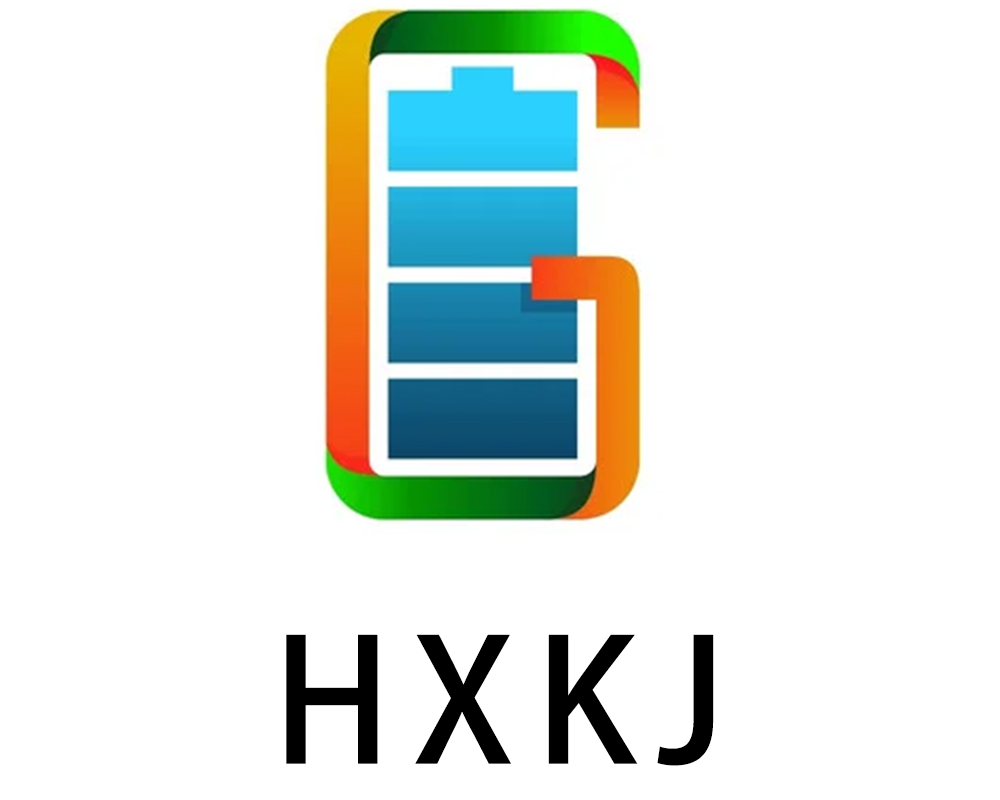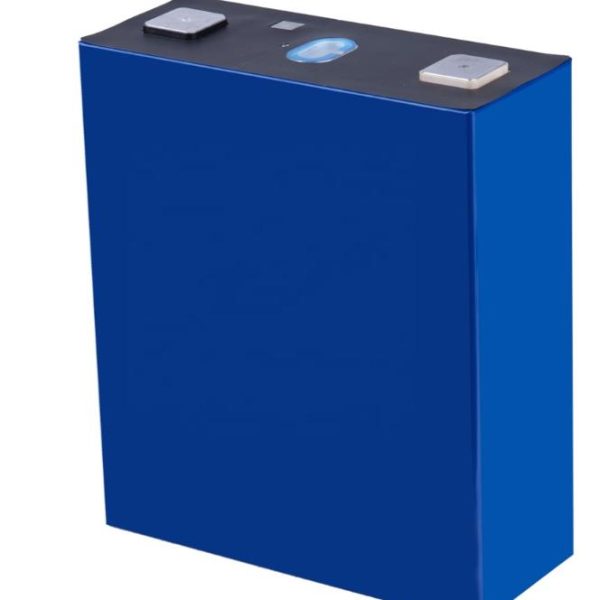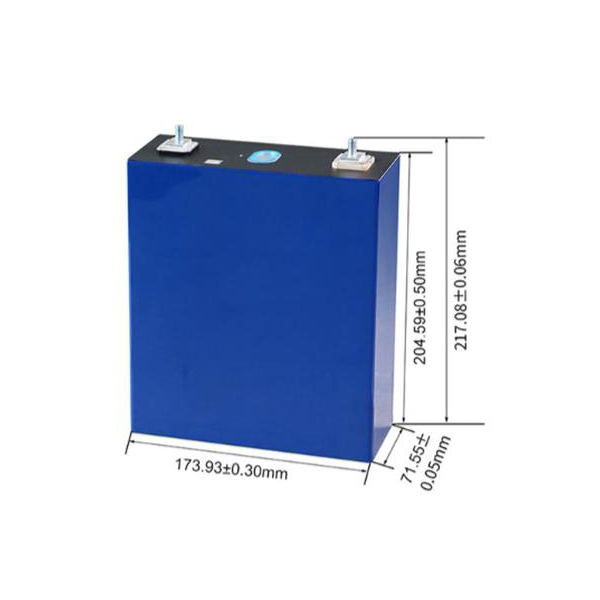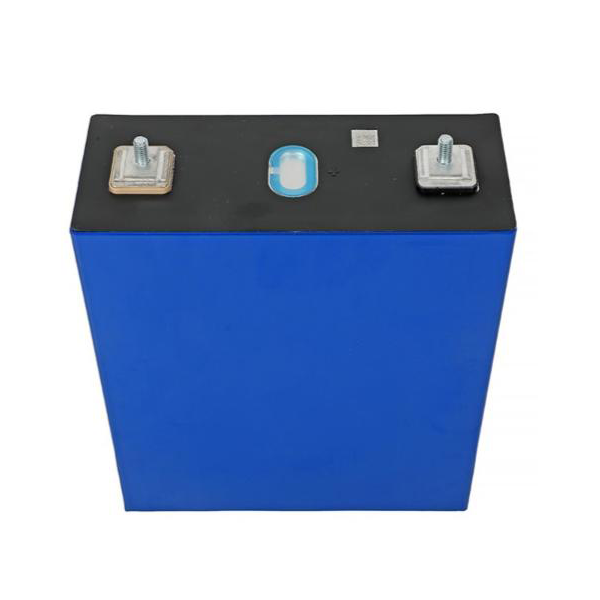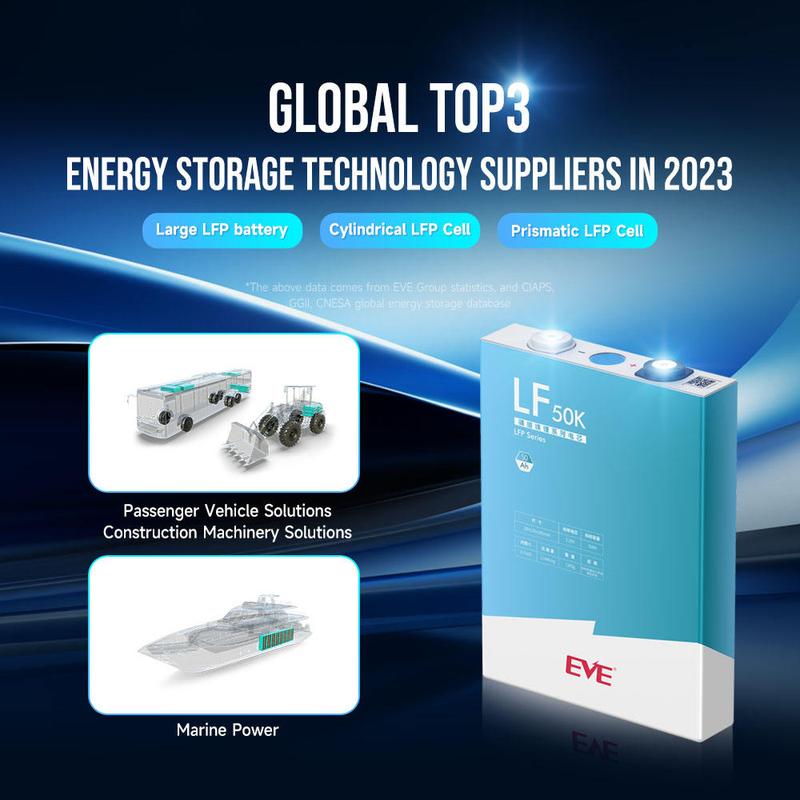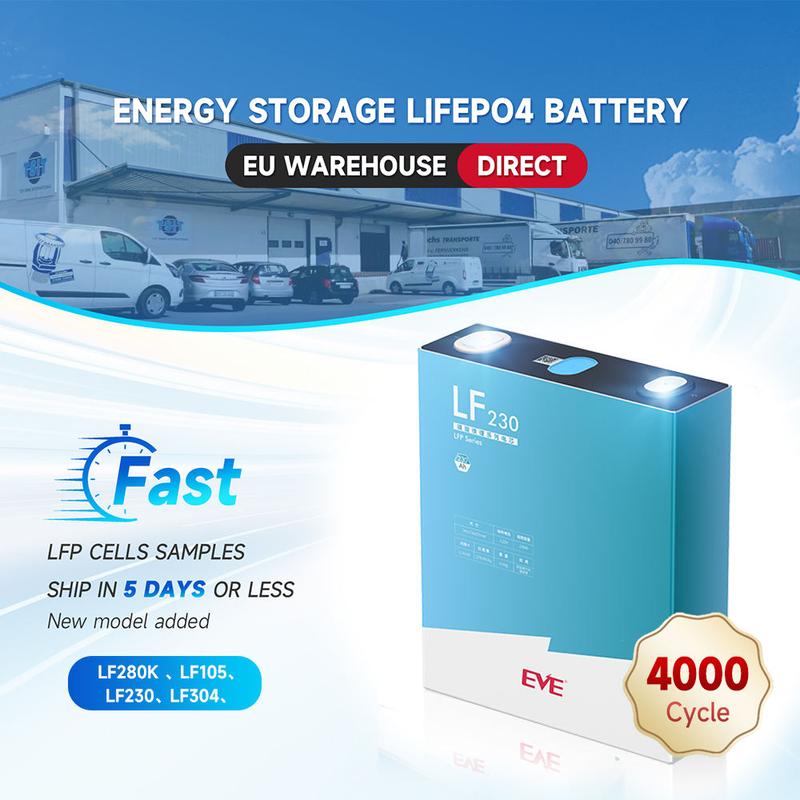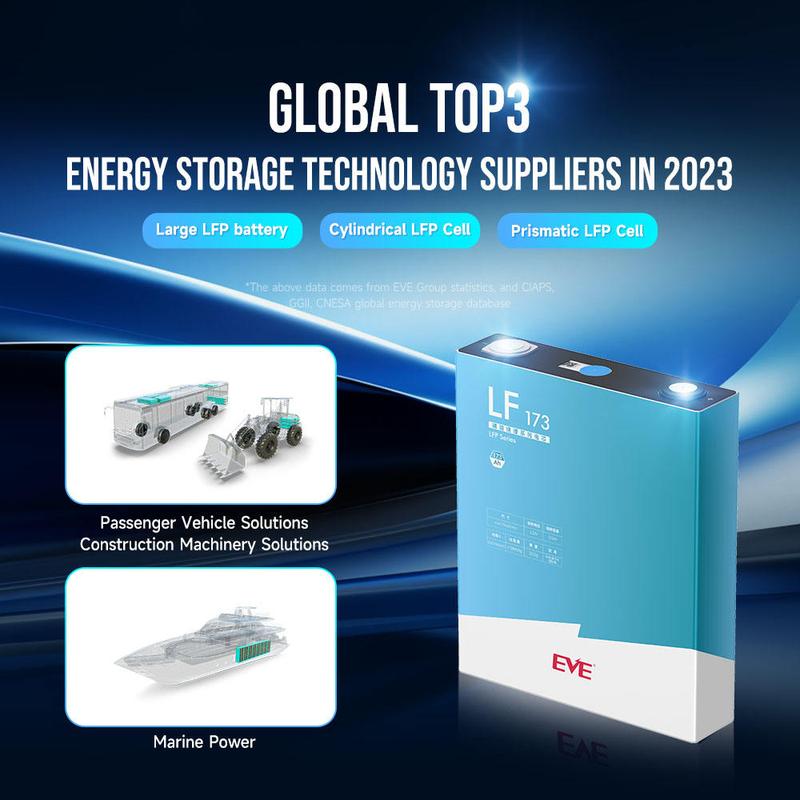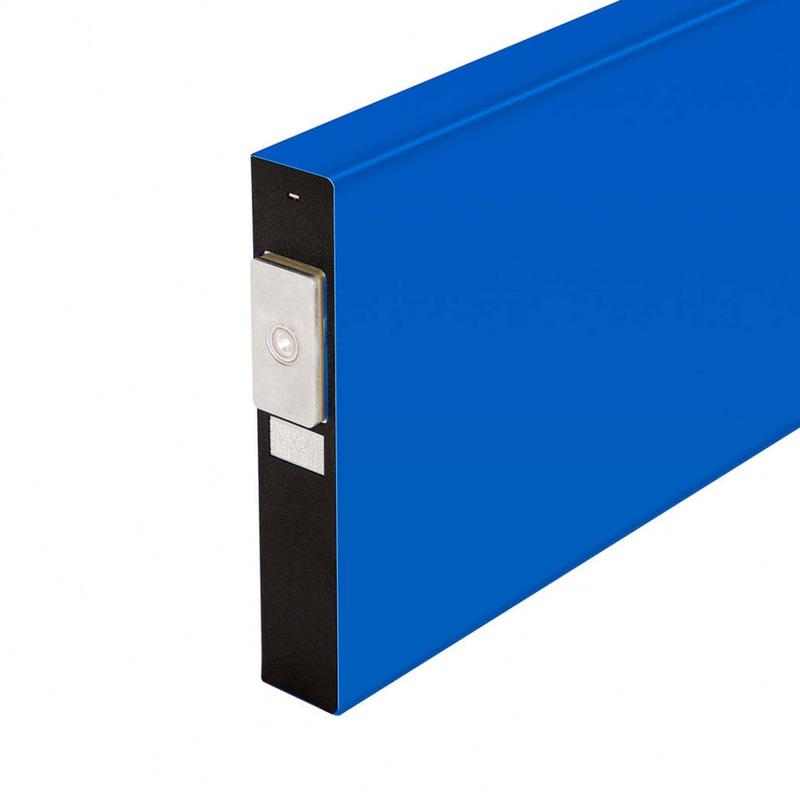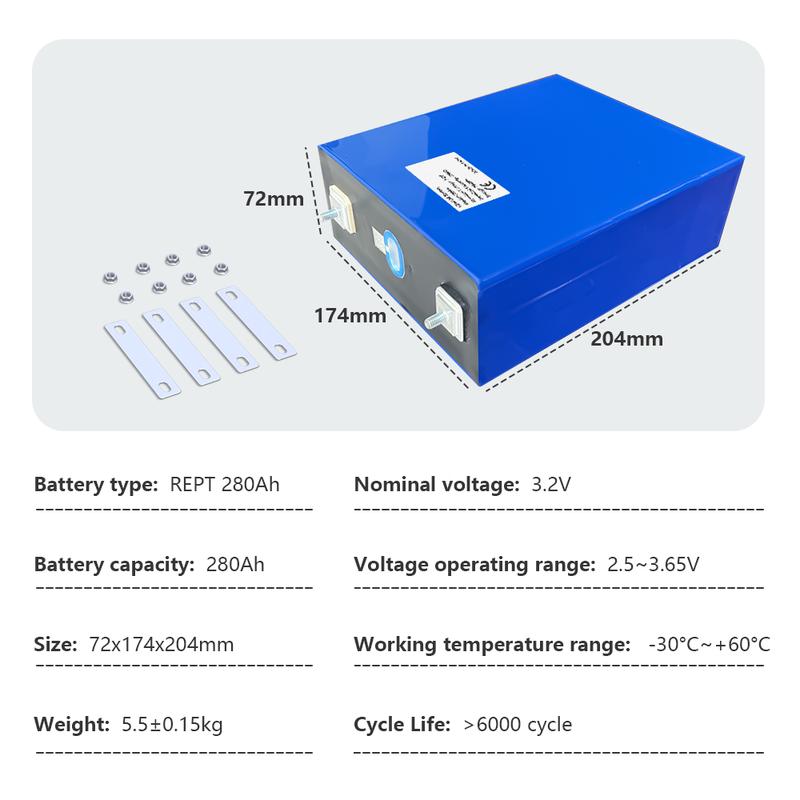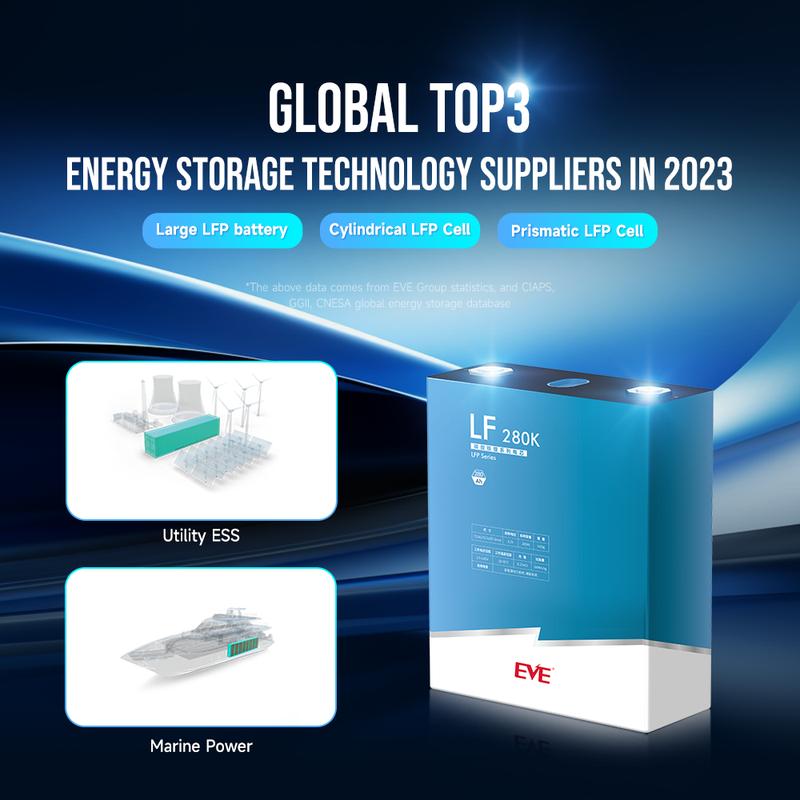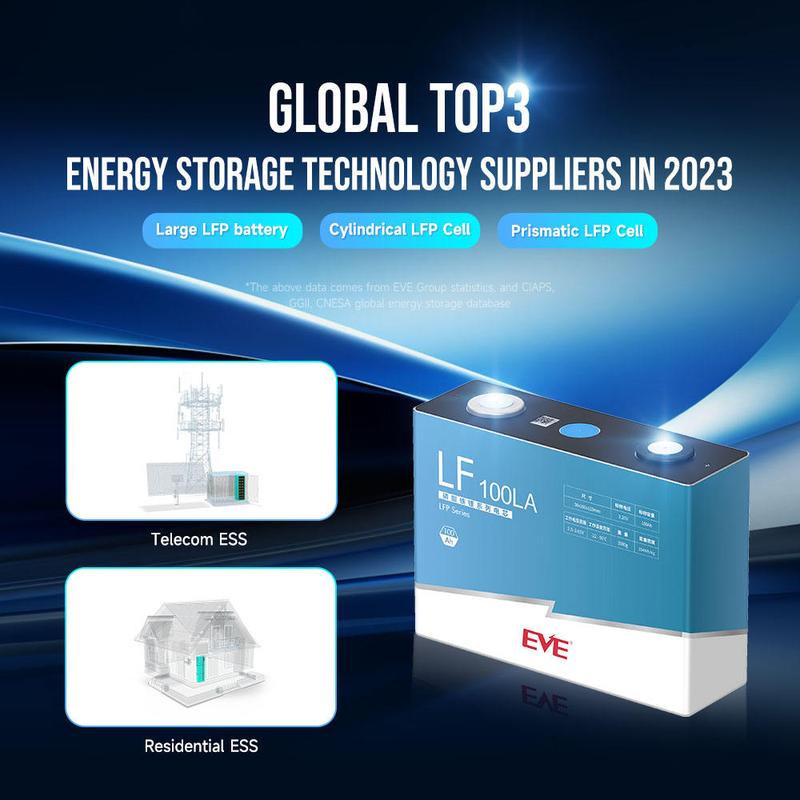-
Guoli Building, Zhonghang Road
REPT 3.2V 280Ah LiFePO4 Solar Battery Cell
Attributes
| Item | Specification | Remark |
|---|---|---|
| Typical Capacity | ≥280Ah (0.5C) | 25±2℃ |
| Typical Voltage | 3.22V | |
| Operating Voltage |
0℃~55℃: 2.5-3.65V -30℃~0℃: 2.0-3.65V | |
| Standard Discharging Current | 140A | 25±2℃ |
| Maximum Continuous Discharging Current | 280A | 25±2℃ |
| Maximum Discharging Current | 560A | @60s,SOC ≥20% |
| Standard Charging Current | 140A | 25±2℃ |
| Maximum Continuous Charging Current | 280A | 25±2℃ |
| Maximum Charging Current | 560A | @60s,SOC ≤80% |
| Operating Temperature |
Charge: 0℃~55℃ Discharge: -30℃~55℃ | |
| Storage Temperature | -30℃~60℃ | |
| Typical Dimension |
Thickness: 71.55mm Width: 173.93±0.3mm Shoulder Height: 204.59±0.5mm Total Height: 207.23±0.5mm | |
| Cathode Material | LiFePO₄ | |
| Cell Weight | 5.34±0.15kg | |
| Energy Density | ≥165Wh/kg | |
| Internal Resistance (1KHz) | ≤0.30mΩ |
Applications & Advantages
1. Key Applications
- Solar Energy Storage
- On-Grid/Off-Grid Systems: Stores excess solar power for later use, ensuring stable energy supply.
- Microgrids & Hybrid Systems: Balances renewable energy fluctuations for homes, businesses, and remote areas.
- Residential & Commercial Backup Power
- Home Energy Storage: Powers essential appliances during outages or peak electricity pricing.
- Industrial Peak Shaving: Reduces energy costs by discharging stored power during high-demand periods.
- Electric Mobility & Off-Grid Power
- EVs & E-Buses: High capacity (280Ah) supports long-range electric vehicles.
- Marine & RV Use: Reliable power for boats, RVs, and off-grid cabins.
- Critical Infrastructure & Emergency Backup
- UPS Systems: Ensures uninterrupted power for data centers, hospitals, and telecom towers.
- Disaster Relief: Provides emergency power in remote or disaster-hit areas.
Core Advantages
Superior Safety
- Stable LiFePO4 Chemistry: No thermal runaway risk, even under extreme conditions.
- Built-in BMS Protection: Prevents overcharge, over-discharge, and overheating.
✅ Long Lifespan & Low Degradation
- 6,000+ Cycles (at 80% DoD), far outperforming lead-acid batteries.
- Minimal Capacity Loss: Retains ≥95% capacity after 180 cycles.
✅ Wide Temperature Range
- Discharge: -30°C to 55°C | Charge: 0°C to 55°C – ideal for harsh climates.
- Cold Weather Performance: Works efficiently even at -20°C.
✅ High Power & Fast Charging
- 560A Max Discharge (2C for 60s) – supports high-power applications.
- 1C Fast Charging (140A) – reduces downtime in commercial use.
✅ Compact & Eco-Friendly
- High Energy Density (≥165 Wh/kg) – saves space in installations.
- Zero Toxic Materials – fully recyclable and maintenance-free.
Note
- Temperature Control
- Charge within 0℃~55℃; discharge within -30℃~55℃ (preheat in extreme cold)8910.
- Charge/Discharge Limits
- Charge ≤3.65V, discharge ≥2.5V; recommended DoD ≤80%689.
- Safety Protocols
- Avoid short circuits or water exposure; use laser welding for connections68.
- Storage Requirements
- Long-term storage: 0℃~35℃ with humidity <95%89.
- Recycling Compliance
- Dispose via certified facilities
10 things to note when purchasing products from China
Help Center
Have a query? Please check this question and answers
It is prohibited to mix different brands or batches of batteries for reasons including:
Capacity difference: CATL 280Ah and EVE LF280K actual capacity error ±3%, parallel connection may lead to reverse charging loss;
Inconsistency in internal resistance: BMS equalization fails after mixing, accelerating the attenuation of the weakest monomer in the group (barrel effect).
Solution: Separate the capacity and selection before grouping to ensure that the difference in internal resistance is less than 1mΩ and the difference in voltage is less than 10mV.
The products are UN38.3 (aviation safety certification), CE (European Union access), RoHS (no hazardous substances) certified
In the case that the description of the battery you are shopping for states that it still works at that temperature, the capacity drops to 50%-60% at -20°C, it is recommended:
Optional low temperature electrolyte (boost 10%-15% capacity);
Add preheating system (e.g. solar energy storage scenario).
High temperature protection: 55°C is the upper working limit, need to:
Avoid direct sunlight (add sunshade for outdoor installation);
Regularly check the cooling ducts and keep the distance between batteries ≥ 5cm
It is strongly recommended to use the original matching charger. The battery supports 1C standard charging (280A current), if using a non-specialized charger may lead to:
Risk of overcharging: over-voltage of ordinary lead-acid charger (e.g. 58.4V for Li-ion Sainty) may trigger the protection board to lock up;
Loss of efficiency: non-matching chargers may not be able to activate the BMS equalization function, resulting in widening the voltage difference between single units.
Recommended configuration: 48V system using 58.4V lithium iron phosphate special charger, support Bluetooth module real-time monitoring of the charging status.
Protective measures: wear insulating gloves and goggles, use matching copper rows (free connectors included) to reduce contact resistance;Environmental requirements: working temperature -20°C~55°C, humidity <70%, avoid direct sunlight;
Parallel/series connection rules: parallel connection requires the same cell capacity, series connection requires the configuration of active equalization BMS.
Q: How to extend the overall life of the battery pack?
A: Follow the “barrel theory” – check the weakest cell regularly:
Use a voltmeter to check the consistency of the cells every month;
Avoid frequent fast charging (>1C) or deep discharging (<10%);
For energy storage scenarios, we recommend charging to 90% and discharging to 20% to slow down the degradation.
Lithium iron phosphate battery capacity drops to 50-60% of normal at -20°C (about 70% for ternary batteries)
If the voltage of the whole pack is lower than the nominal value or the temperature of a single unit is too high, it may be due to wrong connection, short circuit or poor cell consistency.
Suggestion: Check whether the electrode connection is loose or reversed;
Use active equalization module to balance the voltage of the cell;
Replace the monobloc with abnormal performance
